-
FACTOR ANALYSIS
-
\r\n\r\n\r\nValue chain Analysis
-
\r\n\r\n\r\nPorter's
-
Five Forces Analysis
-
\r\n\r\n\r\nBargaining Power of Suppliers
-
\r\n\r\n\r\nBargaining
-
Power of Buyers
-
\r\n\r\n\r\nThreat of New Entrants
-
\r\n\r\n\r\nThreat
-
of Substitutes
-
\r\n\r\n\r\nIntensity of Rivalry
-
\r\n\r\n\r\n\r\n\r\nCOVID-19
-
Impact Analysis
-
\r\n\r\n\r\nMarket Impact Analysis
-
\r\n\r\n\r\nRegional
-
Impact
-
\r\n\r\n\r\nOpportunity and Threat Analysis
-
\r\n\r\n\r\n\r\n\r\n\r\n\r\n\r\n\r\nMicroalgae
-
Market, BY Application (USD Billion)
-
\r\n\r\n\r\nFood and
-
Beverages
-
\r\n\r\n\r\nNutraceuticals
-
\r\n\r\n\r\nCosmetics
-
\r\n\r\n\r\nAnimal
-
Feed
-
\r\n\r\n\r\nBiofuels
-
\r\n\r\n\r\n\r\n\r\nMicroalgae
-
Market, BY Product Type (USD Billion)
-
\r\n\r\n\r\nSpirulina
-
\r\n\r\n\r\nChlorella
-
\r\n\r\n\r\nAstaxanthin
-
\r\n\r\n\r\nBeta-Carotene
-
\r\n\r\n\r\nPhycocyanin
-
\r\n\r\n\r\n\r\n\r\nMicroalgae
-
Market, BY Form (USD Billion)
-
\r\n\r\n\r\nPowder
-
\r\n\r\n\r\nLiquid
-
\r\n\r\n\r\nGranules
-
\r\n\r\n\r\n\r\n\r\nMicroalgae
-
Market, BY End Use (USD Billion)
-
\r\n\r\n\r\nHealth Supplements
-
\r\n\r\n\r\nFunctional
-
Foods
-
\r\n\r\n\r\nAqua Farming
-
\r\n\r\n\r\n\r\n\r\nMicroalgae
-
Market, BY Regional (USD Billion)
-
\r\n\r\n\r\nNorth America
-
\r\n\r\n\r\nUS
-
\r\n\r\n\r\nCanada
-
\r\n\r\n\r\n\r\n\r\nEurope
-
\r\n\r\n\r\nGermany
-
\r\n\r\n\r\nUK
-
\r\n\r\n\r\nFrance
-
\r\n\r\n\r\nRussia
-
\r\n\r\n\r\nItaly
-
\r\n\r\n\r\nSpain
-
\r\n\r\n\r\nRest
-
of Europe
-
\r\n\r\n\r\n\r\n\r\nAPAC
-
\r\n\r\n\r\nChina
-
\r\n\r\n\r\nIndia
-
\r\n\r\n\r\nJapan
-
\r\n\r\n\r\nSouth
-
Korea
-
\r\n\r\n\r\nMalaysia
-
\r\n\r\n\r\nThailand
-
\r\n\r\n\r\nIndonesia
-
\r\n\r\n\r\nRest
-
of APAC
-
\r\n\r\n\r\n\r\n\r\nSouth America
-
\r\n\r\n\r\nBrazil
-
\r\n\r\n\r\nMexico
-
\r\n\r\n\r\nArgentina
-
\r\n\r\n\r\nRest
-
of South America
-
\r\n\r\n\r\n\r\n\r\nMEA
-
\r\n\r\n\r\nGCC
-
Countries
-
\r\n\r\n\r\nSouth Africa
-
\r\n\r\n\r\nRest
-
of MEA
-
\r\n\r\n\r\n\r\n\r\n\r\n\r\n\r\n\r\nCompetitive
-
Landscape
-
\r\n\r\n\r\nOverview
-
\r\n\r\n\r\nCompetitive
-
Analysis
-
\r\n\r\n\r\nMarket share Analysis
-
\r\n\r\n\r\nMajor
-
Growth Strategy in the Microalgae Market
-
\r\n\r\n\r\nCompetitive
-
Benchmarking
-
\r\n\r\n\r\nLeading Players in Terms of Number of Developments
-
in the Microalgae Market
-
\r\n\r\n\r\nKey developments and growth
-
strategies
-
\r\n\r\n\r\nNew Product Launch/Service Deployment
-
\r\n\r\n\r\nMerger
-
& Acquisitions
-
\r\n\r\n\r\nJoint Ventures
-
\r\n\r\n\r\n\r\n\r\nMajor
-
Players Financial Matrix
-
\r\n\r\n\r\nSales and Operating Income
-
\r\n\r\n\r\nMajor
-
Players R&D Expenditure. 2023
-
\r\n\r\n\r\n\r\n\r\n\r\n\r\nCompany
-
Profiles
-
\r\n\r\n\r\nNutraceutics
-
\r\n\r\n\r\nFinancial
-
Overview
-
\r\n\r\n\r\nProducts Offered
-
\r\n\r\n\r\nKey
-
Developments
-
\r\n\r\n\r\nSWOT Analysis
-
\r\n\r\n\r\nKey
-
Strategies
-
\r\n\r\n\r\n\r\n\r\nSolazyme
-
\r\n\r\n\r\nFinancial
-
Overview
-
\r\n\r\n\r\nProducts Offered
-
\r\n\r\n\r\nKey
-
Developments
-
\r\n\r\n\r\nSWOT Analysis
-
\r\n\r\n\r\nKey
-
Strategies
-
\r\n\r\n\r\n\r\n\r\nSpirulina Pacifica
-
\r\n\r\n\r\nFinancial
-
Overview
-
\r\n\r\n\r\nProducts Offered
-
\r\n\r\n\r\nKey
-
Developments
-
\r\n\r\n\r\nSWOT Analysis
-
\r\n\r\n\r\nKey
-
Strategies
-
\r\n\r\n\r\n\r\n\r\nBioCare Copenhagen
-
\r\n\r\n\r\nFinancial
-
Overview
-
\r\n\r\n\r\nProducts Offered
-
\r\n\r\n\r\nKey
-
Developments
-
\r\n\r\n\r\nSWOT Analysis
-
\r\n\r\n\r\nKey
-
Strategies
-
\r\n\r\n\r\n\r\n\r\nCyanotech Corporation
-
\r\n\r\n\r\nFinancial
-
Overview
-
\r\n\r\n\r\nProducts Offered
-
\r\n\r\n\r\nKey
-
Developments
-
\r\n\r\n\r\nSWOT Analysis
-
\r\n\r\n\r\nKey
-
Strategies
-
\r\n\r\n\r\n\r\n\r\nAlgaHealth
-
\r\n\r\n\r\nFinancial
-
Overview
-
\r\n\r\n\r\nProducts Offered
-
\r\n\r\n\r\nKey
-
Developments
-
\r\n\r\n\r\nSWOT Analysis
-
\r\n\r\n\r\nKey
-
Strategies
-
\r\n\r\n\r\n\r\n\r\nMarinova
-
\r\n\r\n\r\nFinancial
-
Overview
-
\r\n\r\n\r\nProducts Offered
-
\r\n\r\n\r\nKey
-
Developments
-
\r\n\r\n\r\nSWOT Analysis
-
\r\n\r\n\r\nKey
-
Strategies
-
\r\n\r\n\r\n\r\n\r\nBlueBioTech
-
\r\n\r\n\r\nFinancial
-
Overview
-
\r\n\r\n\r\nProducts Offered
-
\r\n\r\n\r\nKey
-
Developments
-
\r\n\r\n\r\nSWOT Analysis
-
\r\n\r\n\r\nKey
-
Strategies
-
\r\n\r\n\r\n\r\n\r\nDunaliella
-
\r\n\r\n\r\nFinancial
-
Overview
-
\r\n\r\n\r\nProducts Offered
-
\r\n\r\n\r\nKey
-
Developments
-
\r\n\r\n\r\nSWOT Analysis
-
\r\n\r\n\r\nKey
-
Strategies
-
\r\n\r\n\r\n\r\n\r\nE.I. du Pont de Nemours
-
and Company
-
\r\n\r\n\r\nFinancial Overview
-
\r\n\r\n\r\nProducts
-
Offered
-
\r\n\r\n\r\nKey Developments
-
\r\n\r\n\r\nSWOT
-
Analysis
-
\r\n\r\n\r\nKey Strategies
-
\r\n\r\n\r\n\r\n\r\nFuqing
-
KingDairy
-
\r\n\r\n\r\nFinancial Overview
-
\r\n\r\n\r\nProducts
-
Offered
-
\r\n\r\n\r\nKey Developments
-
\r\n\r\n\r\nSWOT
-
Analysis
-
\r\n\r\n\r\nKey Strategies
-
\r\n\r\n\r\n\r\n\r\nAlgatechnologies
-
\r\n\r\n\r\nFinancial
-
Overview
-
\r\n\r\n\r\nProducts Offered
-
\r\n\r\n\r\nKey
-
Developments
-
\r\n\r\n\r\nSWOT Analysis
-
\r\n\r\n\r\nKey
-
Strategies
-
\r\n\r\n\r\n\r\n\r\nPhytotech
-
\r\n\r\n\r\nFinancial
-
Overview
-
\r\n\r\n\r\nProducts Offered
-
\r\n\r\n\r\nKey
-
Developments
-
\r\n\r\n\r\nSWOT Analysis
-
\r\n\r\n\r\nKey
-
Strategies
-
\r\n\r\n\r\n\r\n\r\nNeringa
-
\r\n\r\n\r\nFinancial
-
Overview
-
\r\n\r\n\r\nProducts Offered
-
\r\n\r\n\r\nKey
-
Developments
-
\r\n\r\n\r\nSWOT Analysis
-
\r\n\r\n\r\nKey
-
Strategies
-
\r\n\r\n\r\n\r\n\r\nAllmicroalgae
-
\r\n\r\n\r\nFinancial
-
Overview
-
\r\n\r\n\r\nProducts Offered
-
\r\n\r\n\r\nKey
-
Developments
-
\r\n\r\n\r\nSWOT Analysis
-
\r\n\r\n\r\nKey
-
Strategies
-
\r\n\r\n\r\n\r\n\r\n\r\n\r\nAppendix
-
\r\n\r\n\r\nReferences
-
\r\n\r\n\r\nRelated
-
Reports
-
\r\n\r\n\r\n\r\n\r\nLIST Of tables
-
\r\n\r\n\r\nLIST
-
OF ASSUMPTIONS
-
\r\n\r\n\r\nNorth America Microalgae Market SIZE ESTIMATES
-
& FORECAST, BY APPLICATION, 2019-2035 (USD Billions)
-
\r\n\r\n\r\nNorth
-
America Microalgae Market SIZE ESTIMATES & FORECAST, BY PRODUCT TYPE, 2019-2035
-
(USD Billions)
-
\r\n\r\n\r\nNorth America Microalgae Market SIZE ESTIMATES
-
& FORECAST, BY FORM, 2019-2035 (USD Billions)
-
\r\n\r\n\r\nNorth
-
America Microalgae Market SIZE ESTIMATES & FORECAST, BY END USE, 2019-2035 (USD
-
Billions)
-
\r\n\r\n\r\nNorth America Microalgae Market SIZE ESTIMATES
-
& FORECAST, BY REGIONAL, 2019-2035 (USD Billions)
-
\r\n\r\n\r\nUS
-
Microalgae Market SIZE ESTIMATES & FORECAST, BY APPLICATION, 2019-2035 (USD
-
Billions)
-
\r\n\r\n\r\nUS Microalgae Market SIZE ESTIMATES & FORECAST,
-
BY PRODUCT TYPE, 2019-2035 (USD Billions)
-
\r\n\r\n\r\nUS Microalgae
-
Market SIZE ESTIMATES & FORECAST, BY FORM, 2019-2035 (USD Billions)
-
\r\n\r\n\r\nUS
-
Microalgae Market SIZE ESTIMATES & FORECAST, BY END USE, 2019-2035 (USD Billions)
-
\r\n\r\n\r\nUS
-
Microalgae Market SIZE ESTIMATES & FORECAST, BY REGIONAL, 2019-2035 (USD Billions)
-
\r\n\r\n\r\nCanada
-
Microalgae Market SIZE ESTIMATES & FORECAST, BY APPLICATION, 2019-2035 (USD
-
Billions)
-
\r\n\r\n\r\nCanada Microalgae Market SIZE ESTIMATES &
-
FORECAST, BY PRODUCT TYPE, 2019-2035 (USD Billions)
-
\r\n\r\n\r\nCanada
-
Microalgae Market SIZE ESTIMATES & FORECAST, BY FORM, 2019-2035 (USD Billions)
-
\r\n\r\n\r\nCanada
-
Microalgae Market SIZE ESTIMATES & FORECAST, BY END USE, 2019-2035 (USD Billions)
-
\r\n\r\n\r\nCanada
-
Microalgae Market SIZE ESTIMATES & FORECAST, BY REGIONAL, 2019-2035 (USD Billions)
-
\r\n\r\n\r\nEurope
-
Microalgae Market SIZE ESTIMATES & FORECAST, BY APPLICATION, 2019-2035 (USD
-
Billions)
-
\r\n\r\n\r\nEurope Microalgae Market SIZE ESTIMATES &
-
FORECAST, BY PRODUCT TYPE, 2019-2035 (USD Billions)
-
\r\n\r\n\r\nEurope
-
Microalgae Market SIZE ESTIMATES & FORECAST, BY FORM, 2019-2035 (USD Billions)
-
\r\n\r\n\r\nEurope
-
Microalgae Market SIZE ESTIMATES & FORECAST, BY END USE, 2019-2035 (USD Billions)
-
\r\n\r\n\r\nEurope
-
Microalgae Market SIZE ESTIMATES & FORECAST, BY REGIONAL, 2019-2035 (USD Billions)
-
\r\n\r\n\r\nGermany
-
Microalgae Market SIZE ESTIMATES & FORECAST, BY APPLICATION, 2019-2035 (USD
-
Billions)
-
\r\n\r\n\r\nGermany Microalgae Market SIZE ESTIMATES &
-
FORECAST, BY PRODUCT TYPE, 2019-2035 (USD Billions)
-
\r\n\r\n\r\nGermany
-
Microalgae Market SIZE ESTIMATES & FORECAST, BY FORM, 2019-2035 (USD Billions)
-
\r\n\r\n\r\nGermany
-
Microalgae Market SIZE ESTIMATES & FORECAST, BY END USE, 2019-2035 (USD Billions)
-
\r\n\r\n\r\nGermany
-
Microalgae Market SIZE ESTIMATES & FORECAST, BY REGIONAL, 2019-2035 (USD Billions)
-
\r\n\r\n\r\nUK
-
Microalgae Market SIZE ESTIMATES & FORECAST, BY APPLICATION, 2019-2035 (USD
-
Billions)
-
\r\n\r\n\r\nUK Microalgae Market SIZE ESTIMATES & FORECAST,
-
BY PRODUCT TYPE, 2019-2035 (USD Billions)
-
\r\n\r\n\r\nUK Microalgae
-
Market SIZE ESTIMATES & FORECAST, BY FORM, 2019-2035 (USD Billions)
-
\r\n\r\n\r\nUK
-
Microalgae Market SIZE ESTIMATES & FORECAST, BY END USE, 2019-2035 (USD Billions)
-
\r\n\r\n\r\nUK
-
Microalgae Market SIZE ESTIMATES & FORECAST, BY REGIONAL, 2019-2035 (USD Billions)
-
\r\n\r\n\r\nFrance
-
Microalgae Market SIZE ESTIMATES & FORECAST, BY APPLICATION, 2019-2035 (USD
-
Billions)
-
\r\n\r\n\r\nFrance Microalgae Market SIZE ESTIMATES &
-
FORECAST, BY PRODUCT TYPE, 2019-2035 (USD Billions)
-
\r\n\r\n\r\nFrance
-
Microalgae Market SIZE ESTIMATES & FORECAST, BY FORM, 2019-2035 (USD Billions)
-
\r\n\r\n\r\nFrance
-
Microalgae Market SIZE ESTIMATES & FORECAST, BY END USE, 2019-2035 (USD Billions)
-
\r\n\r\n\r\nFrance
-
Microalgae Market SIZE ESTIMATES & FORECAST, BY REGIONAL, 2019-2035 (USD Billions)
-
\r\n\r\n\r\nRussia
-
Microalgae Market SIZE ESTIMATES & FORECAST, BY APPLICATION, 2019-2035 (USD
-
Billions)
-
\r\n\r\n\r\nRussia Microalgae Market SIZE ESTIMATES &
-
FORECAST, BY PRODUCT TYPE, 2019-2035 (USD Billions)
-
\r\n\r\n\r\nRussia
-
Microalgae Market SIZE ESTIMATES & FORECAST, BY FORM, 2019-2035 (USD Billions)
-
\r\n\r\n\r\nRussia
-
Microalgae Market SIZE ESTIMATES & FORECAST, BY END USE, 2019-2035 (USD Billions)
-
\r\n\r\n\r\nRussia
-
Microalgae Market SIZE ESTIMATES & FORECAST, BY REGIONAL, 2019-2035 (USD Billions)
-
\r\n\r\n\r\nItaly
-
Microalgae Market SIZE ESTIMATES & FORECAST, BY APPLICATION, 2019-2035 (USD
-
Billions)
-
\r\n\r\n\r\nItaly Microalgae Market SIZE ESTIMATES &
-
FORECAST, BY PRODUCT TYPE, 2019-2035 (USD Billions)
-
\r\n\r\n\r\nItaly
-
Microalgae Market SIZE ESTIMATES & FORECAST, BY FORM, 2019-2035 (USD Billions)
-
\r\n\r\n\r\nItaly
-
Microalgae Market SIZE ESTIMATES & FORECAST, BY END USE, 2019-2035 (USD Billions)
-
\r\n\r\n\r\nItaly
-
Microalgae Market SIZE ESTIMATES & FORECAST, BY REGIONAL, 2019-2035 (USD Billions)
-
\r\n\r\n\r\nSpain
-
Microalgae Market SIZE ESTIMATES & FORECAST, BY APPLICATION, 2019-2035 (USD
-
Billions)
-
\r\n\r\n\r\nSpain Microalgae Market SIZE ESTIMATES &
-
FORECAST, BY PRODUCT TYPE, 2019-2035 (USD Billions)
-
\r\n\r\n\r\nSpain
-
Microalgae Market SIZE ESTIMATES & FORECAST, BY FORM, 2019-2035 (USD Billions)
-
\r\n\r\n\r\nSpain
-
Microalgae Market SIZE ESTIMATES & FORECAST, BY END USE, 2019-2035 (USD Billions)
-
\r\n\r\n\r\nSpain
-
Microalgae Market SIZE ESTIMATES & FORECAST, BY REGIONAL, 2019-2035 (USD Billions)
-
\r\n\r\n\r\nRest
-
of Europe Microalgae Market SIZE ESTIMATES & FORECAST, BY APPLICATION, 2019-2035
-
(USD Billions)
-
\r\n\r\n\r\nRest of Europe Microalgae Market SIZE
-
ESTIMATES & FORECAST, BY PRODUCT TYPE, 2019-2035 (USD Billions)
-
\r\n\r\n\r\nRest
-
of Europe Microalgae Market SIZE ESTIMATES & FORECAST, BY FORM, 2019-2035 (USD
-
Billions)
-
\r\n\r\n\r\nRest of Europe Microalgae Market SIZE ESTIMATES
-
& FORECAST, BY END USE, 2019-2035 (USD Billions)
-
\r\n\r\n\r\nRest
-
of Europe Microalgae Market SIZE ESTIMATES & FORECAST, BY REGIONAL, 2019-2035
-
(USD Billions)
-
\r\n\r\n\r\nAPAC Microalgae Market SIZE ESTIMATES
-
& FORECAST, BY APPLICATION, 2019-2035 (USD Billions)
-
\r\n\r\n\r\nAPAC
-
Microalgae Market SIZE ESTIMATES & FORECAST, BY PRODUCT TYPE, 2019-2035 (USD
-
Billions)
-
\r\n\r\n\r\nAPAC Microalgae Market SIZE ESTIMATES &
-
FORECAST, BY FORM, 2019-2035 (USD Billions)
-
\r\n\r\n\r\nAPAC Microalgae
-
Market SIZE ESTIMATES & FORECAST, BY END USE, 2019-2035 (USD Billions)
-
\r\n\r\n\r\nAPAC
-
Microalgae Market SIZE ESTIMATES & FORECAST, BY REGIONAL, 2019-2035 (USD Billions)
-
\r\n\r\n\r\nChina
-
Microalgae Market SIZE ESTIMATES & FORECAST, BY APPLICATION, 2019-2035 (USD
-
Billions)
-
\r\n\r\n\r\nChina Microalgae Market SIZE ESTIMATES &
-
FORECAST, BY PRODUCT TYPE, 2019-2035 (USD Billions)
-
\r\n\r\n\r\nChina
-
Microalgae Market SIZE ESTIMATES & FORECAST, BY FORM, 2019-2035 (USD Billions)
-
\r\n\r\n\r\nChina
-
Microalgae Market SIZE ESTIMATES & FORECAST, BY END USE, 2019-2035 (USD Billions)
-
\r\n\r\n\r\nChina
-
Microalgae Market SIZE ESTIMATES & FORECAST, BY REGIONAL, 2019-2035 (USD Billions)
-
\r\n\r\n\r\nIndia
-
Microalgae Market SIZE ESTIMATES & FORECAST, BY APPLICATION, 2019-2035 (USD
-
Billions)
-
\r\n\r\n\r\nIndia Microalgae Market SIZE ESTIMATES &
-
FORECAST, BY PRODUCT TYPE, 2019-2035 (USD Billions)
-
\r\n\r\n\r\nIndia
-
Microalgae Market SIZE ESTIMATES & FORECAST, BY FORM, 2019-2035 (USD Billions)
-
\r\n\r\n\r\nIndia
-
Microalgae Market SIZE ESTIMATES & FORECAST, BY END USE, 2019-2035 (USD Billions)
-
\r\n\r\n\r\nIndia
-
Microalgae Market SIZE ESTIMATES & FORECAST, BY REGIONAL, 2019-2035 (USD Billions)
-
\r\n\r\n\r\nJapan
-
Microalgae Market SIZE ESTIMATES & FORECAST, BY APPLICATION, 2019-2035 (USD
-
Billions)
-
\r\n\r\n\r\nJapan Microalgae Market SIZE ESTIMATES &
-
FORECAST, BY PRODUCT TYPE, 2019-2035 (USD Billions)
-
\r\n\r\n\r\nJapan
-
Microalgae Market SIZE ESTIMATES & FORECAST, BY FORM, 2019-2035 (USD Billions)
-
\r\n\r\n\r\nJapan
-
Microalgae Market SIZE ESTIMATES & FORECAST, BY END USE, 2019-2035 (USD Billions)
-
\r\n\r\n\r\nJapan
-
Microalgae Market SIZE ESTIMATES & FORECAST, BY REGIONAL, 2019-2035 (USD Billions)
-
\r\n\r\n\r\nSouth
-
Korea Microalgae Market SIZE ESTIMATES & FORECAST, BY APPLICATION, 2019-2035
-
(USD Billions)
-
\r\n\r\n\r\nSouth Korea Microalgae Market SIZE ESTIMATES
-
& FORECAST, BY PRODUCT TYPE, 2019-2035 (USD Billions)
-
\r\n\r\n\r\nSouth
-
Korea Microalgae Market SIZE ESTIMATES & FORECAST, BY FORM, 2019-2035 (USD Billions)
-
\r\n\r\n\r\nSouth
-
Korea Microalgae Market SIZE ESTIMATES & FORECAST, BY END USE, 2019-2035 (USD
-
Billions)
-
\r\n\r\n\r\nSouth Korea Microalgae Market SIZE ESTIMATES
-
& FORECAST, BY REGIONAL, 2019-2035 (USD Billions)
-
\r\n\r\n\r\nMalaysia
-
Microalgae Market SIZE ESTIMATES & FORECAST, BY APPLICATION, 2019-2035 (USD
-
Billions)
-
\r\n\r\n\r\nMalaysia Microalgae Market SIZE ESTIMATES &
-
FORECAST, BY PRODUCT TYPE, 2019-2035 (USD Billions)
-
\r\n\r\n\r\nMalaysia
-
Microalgae Market SIZE ESTIMATES & FORECAST, BY FORM, 2019-2035 (USD Billions)
-
\r\n\r\n\r\nMalaysia
-
Microalgae Market SIZE ESTIMATES & FORECAST, BY END USE, 2019-2035 (USD Billions)
-
\r\n\r\n\r\nMalaysia
-
Microalgae Market SIZE ESTIMATES & FORECAST, BY REGIONAL, 2019-2035 (USD Billions)
-
\r\n\r\n\r\nThailand
-
Microalgae Market SIZE ESTIMATES & FORECAST, BY APPLICATION, 2019-2035 (USD
-
Billions)
-
\r\n\r\n\r\nThailand Microalgae Market SIZE ESTIMATES &
-
FORECAST, BY PRODUCT TYPE, 2019-2035 (USD Billions)
-
\r\n\r\n\r\nThailand
-
Microalgae Market SIZE ESTIMATES & FORECAST, BY FORM, 2019-2035 (USD Billions)
-
\r\n\r\n\r\nThailand
-
Microalgae Market SIZE ESTIMATES & FORECAST, BY END USE, 2019-2035 (USD Billions)
-
\r\n\r\n\r\nThailand
-
Microalgae Market SIZE ESTIMATES & FORECAST, BY REGIONAL, 2019-2035 (USD Billions)
-
\r\n\r\n\r\nIndonesia
-
Microalgae Market SIZE ESTIMATES & FORECAST, BY APPLICATION, 2019-2035 (USD
-
Billions)
-
\r\n\r\n\r\nIndonesia Microalgae Market SIZE ESTIMATES
-
& FORECAST, BY PRODUCT TYPE, 2019-2035 (USD Billions)
-
\r\n\r\n\r\nIndonesia
-
Microalgae Market SIZE ESTIMATES & FORECAST, BY FORM, 2019-2035 (USD Billions)
-
\r\n\r\n\r\nIndonesia
-
Microalgae Market SIZE ESTIMATES & FORECAST, BY END USE, 2019-2035 (USD Billions)
-
\r\n\r\n\r\nIndonesia
-
Microalgae Market SIZE ESTIMATES & FORECAST, BY REGIONAL, 2019-2035 (USD Billions)
-
\r\n\r\n\r\nRest
-
of APAC Microalgae Market SIZE ESTIMATES & FORECAST, BY APPLICATION, 2019-2035
-
(USD Billions)
-
\r\n\r\n\r\nRest of APAC Microalgae Market SIZE ESTIMATES
-
& FORECAST, BY PRODUCT TYPE, 2019-2035 (USD Billions)
-
\r\n\r\n\r\nRest
-
of APAC Microalgae Market SIZE ESTIMATES & FORECAST, BY FORM, 2019-2035 (USD
-
Billions)
-
\r\n\r\n\r\nRest of APAC Microalgae Market SIZE ESTIMATES
-
& FORECAST, BY END USE, 2019-2035 (USD Billions)
-
\r\n\r\n\r\nRest
-
of APAC Microalgae Market SIZE ESTIMATES & FORECAST, BY REGIONAL, 2019-2035
-
(USD Billions)
-
\r\n\r\n\r\nSouth America Microalgae Market SIZE ESTIMATES
-
& FORECAST, BY APPLICATION, 2019-2035 (USD Billions)
-
\r\n\r\n\r\nSouth
-
America Microalgae Market SIZE ESTIMATES & FORECAST, BY PRODUCT TYPE, 2019-2035
-
(USD Billions)
-
\r\n\r\n\r\nSouth America Microalgae Market SIZE ESTIMATES
-
& FORECAST, BY FORM, 2019-2035 (USD Billions)
-
\r\n\r\n\r\nSouth
-
America Microalgae Market SIZE ESTIMATES & FORECAST, BY END USE, 2019-2035 (USD
-
Billions)
-
\r\n\r\n\r\nSouth America Microalgae Market SIZE ESTIMATES
-
& FORECAST, BY REGIONAL, 2019-2035 (USD Billions)
-
\r\n\r\n\r\nBrazil
-
Microalgae Market SIZE ESTIMATES & FORECAST, BY APPLICATION, 2019-2035 (USD
-
Billions)
-
\r\n\r\n\r\nBrazil Microalgae Market SIZE ESTIMATES &
-
FORECAST, BY PRODUCT TYPE, 2019-2035 (USD Billions)
-
\r\n\r\n\r\nBrazil
-
Microalgae Market SIZE ESTIMATES & FORECAST, BY FORM, 2019-2035 (USD Billions)
-
\r\n\r\n\r\nBrazil
-
Microalgae Market SIZE ESTIMATES & FORECAST, BY END USE, 2019-2035 (USD Billions)
-
\r\n\r\n\r\nBrazil
-
Microalgae Market SIZE ESTIMATES & FORECAST, BY REGIONAL, 2019-2035 (USD Billions)
-
\r\n\r\n\r\nMexico
-
Microalgae Market SIZE ESTIMATES & FORECAST, BY APPLICATION, 2019-2035 (USD
-
Billions)
-
\r\n\r\n\r\nMexico Microalgae Market SIZE ESTIMATES &
-
FORECAST, BY PRODUCT TYPE, 2019-2035 (USD Billions)
-
\r\n\r\n\r\nMexico
-
Microalgae Market SIZE ESTIMATES & FORECAST, BY FORM, 2019-2035 (USD Billions)
-
\r\n\r\n\r\nMexico
-
Microalgae Market SIZE ESTIMATES & FORECAST, BY END USE, 2019-2035 (USD Billions)
-
\r\n\r\n\r\nMexico
-
Microalgae Market SIZE ESTIMATES & FORECAST, BY REGIONAL, 2019-2035 (USD Billions)
-
\r\n\r\n\r\nArgentina
-
Microalgae Market SIZE ESTIMATES & FORECAST, BY APPLICATION, 2019-2035 (USD
-
Billions)
-
\r\n\r\n\r\nArgentina Microalgae Market SIZE ESTIMATES
-
& FORECAST, BY PRODUCT TYPE, 2019-2035 (USD Billions)
-
\r\n\r\n\r\nArgentina
-
Microalgae Market SIZE ESTIMATES & FORECAST, BY FORM, 2019-2035 (USD Billions)
-
\r\n\r\n\r\nArgentina
-
Microalgae Market SIZE ESTIMATES & FORECAST, BY END USE, 2019-2035 (USD Billions)
-
\r\n\r\n\r\nArgentina
-
Microalgae Market SIZE ESTIMATES & FORECAST, BY REGIONAL, 2019-2035 (USD Billions)
-
\r\n\r\n\r\nRest
-
of South America Microalgae Market SIZE ESTIMATES & FORECAST, BY APPLICATION,
-
\r\n\r\n\r\nRest of South America Microalgae
-
Market SIZE ESTIMATES & FORECAST, BY PRODUCT TYPE, 2019-2035 (USD Billions)
-
\r\n\r\n\r\nRest
-
of South America Microalgae Market SIZE ESTIMATES & FORECAST, BY FORM, 2019-2035
-
(USD Billions)
-
\r\n\r\n\r\nRest of South America Microalgae Market
-
SIZE ESTIMATES & FORECAST, BY END USE, 2019-2035 (USD Billions)
-
\r\n\r\n\r\nRest
-
of South America Microalgae Market SIZE ESTIMATES & FORECAST, BY REGIONAL, 2019-2035
-
(USD Billions)
-
\r\n\r\n\r\nMEA Microalgae Market SIZE ESTIMATES &
-
FORECAST, BY APPLICATION, 2019-2035 (USD Billions)
-
\r\n\r\n\r\nMEA
-
Microalgae Market SIZE ESTIMATES & FORECAST, BY PRODUCT TYPE, 2019-2035 (USD
-
Billions)
-
\r\n\r\n\r\nMEA Microalgae Market SIZE ESTIMATES &
-
FORECAST, BY FORM, 2019-2035 (USD Billions)
-
\r\n\r\n\r\nMEA Microalgae
-
Market SIZE ESTIMATES & FORECAST, BY END USE, 2019-2035 (USD Billions)
-
\r\n\r\n\r\nMEA
-
Microalgae Market SIZE ESTIMATES & FORECAST, BY REGIONAL, 2019-2035 (USD Billions)
-
\r\n\r\n\r\nGCC
-
Countries Microalgae Market SIZE ESTIMATES & FORECAST, BY APPLICATION, 2019-2035
-
(USD Billions)
-
\r\n\r\n\r\nGCC Countries Microalgae Market SIZE ESTIMATES
-
& FORECAST, BY PRODUCT TYPE, 2019-2035 (USD Billions)
-
\r\n\r\n\r\nGCC
-
Countries Microalgae Market SIZE ESTIMATES & FORECAST, BY FORM, 2019-2035 (USD
-
Billions)
-
\r\n\r\n\r\nGCC Countries Microalgae Market SIZE ESTIMATES
-
& FORECAST, BY END USE, 2019-2035 (USD Billions)
-
\r\n\r\n\r\nGCC
-
Countries Microalgae Market SIZE ESTIMATES & FORECAST, BY REGIONAL, 2019-2035
-
(USD Billions)
-
\r\n\r\n\r\nSouth Africa Microalgae Market SIZE ESTIMATES
-
& FORECAST, BY APPLICATION, 2019-2035 (USD Billions)
-
\r\n\r\n\r\nSouth
-
Africa Microalgae Market SIZE ESTIMATES & FORECAST, BY PRODUCT TYPE, 2019-2035
-
(USD Billions)
-
\r\n\r\n\r\nSouth Africa Microalgae Market SIZE ESTIMATES
-
& FORECAST, BY FORM, 2019-2035 (USD Billions)
-
\r\n\r\n\r\nSouth
-
Africa Microalgae Market SIZE ESTIMATES & FORECAST, BY END USE, 2019-2035 (USD
-
Billions)
-
\r\n\r\n\r\nSouth Africa Microalgae Market SIZE ESTIMATES
-
& FORECAST, BY REGIONAL, 2019-2035 (USD Billions)
-
\r\n\r\n\r\nRest
-
of MEA Microalgae Market SIZE ESTIMATES & FORECAST, BY APPLICATION, 2019-2035
-
(USD Billions)
-
\r\n\r\n\r\nRest of MEA Microalgae Market SIZE ESTIMATES
-
& FORECAST, BY PRODUCT TYPE, 2019-2035 (USD Billions)
-
\r\n\r\n\r\nRest
-
of MEA Microalgae Market SIZE ESTIMATES & FORECAST, BY FORM, 2019-2035 (USD
-
Billions)
-
\r\n\r\n\r\nRest of MEA Microalgae Market SIZE ESTIMATES
-
& FORECAST, BY END USE, 2019-2035 (USD Billions)
-
\r\n\r\n\r\nRest
-
of MEA Microalgae Market SIZE ESTIMATES & FORECAST, BY REGIONAL, 2019-2035 (USD
-
Billions)
-
\r\n\r\n\r\nPRODUCT LAUNCH/PRODUCT DEVELOPMENT/APPROVAL
-
\r\n\r\n\r\nACQUISITION/PARTNERSHIP
-
\r\n\r\n\r\nLIST
-
Of figures
-
\r\n\r\n\r\nMARKET SYNOPSIS
-
\r\n\r\n\r\nNORTH
-
AMERICA MICROALGAE MARKET ANALYSIS
-
\r\n\r\n\r\nUS MICROALGAE MARKET
-
ANALYSIS BY APPLICATION
-
\r\n\r\n\r\nUS MICROALGAE MARKET ANALYSIS
-
BY PRODUCT TYPE
-
\r\n\r\n\r\nUS MICROALGAE MARKET ANALYSIS BY FORM
-
\r\n\r\n\r\nUS
-
MICROALGAE MARKET ANALYSIS BY END USE
-
\r\n\r\n\r\nUS MICROALGAE MARKET
-
ANALYSIS BY REGIONAL
-
\r\n\r\n\r\nCANADA MICROALGAE MARKET ANALYSIS
-
BY APPLICATION
-
\r\n\r\n\r\nCANADA MICROALGAE MARKET ANALYSIS BY PRODUCT
-
TYPE
-
\r\n\r\n\r\nCANADA MICROALGAE MARKET ANALYSIS BY FORM
-
\r\n\r\n\r\nCANADA
-
MICROALGAE MARKET ANALYSIS BY END USE
-
\r\n\r\n\r\nCANADA MICROALGAE
-
MARKET ANALYSIS BY REGIONAL
-
\r\n\r\n\r\nEUROPE MICROALGAE MARKET
-
ANALYSIS
-
\r\n\r\n\r\nGERMANY MICROALGAE MARKET ANALYSIS BY APPLICATION
-
\r\n\r\n\r\nGERMANY
-
MICROALGAE MARKET ANALYSIS BY PRODUCT TYPE
-
\r\n\r\n\r\nGERMANY MICROALGAE
-
MARKET ANALYSIS BY FORM
-
\r\n\r\n\r\nGERMANY MICROALGAE MARKET ANALYSIS
-
BY END USE
-
\r\n\r\n\r\nGERMANY MICROALGAE MARKET ANALYSIS BY REGIONAL
-
\r\n\r\n\r\nUK
-
MICROALGAE MARKET ANALYSIS BY APPLICATION
-
\r\n\r\n\r\nUK MICROALGAE
-
MARKET ANALYSIS BY PRODUCT TYPE
-
\r\n\r\n\r\nUK MICROALGAE MARKET
-
ANALYSIS BY FORM
-
\r\n\r\n\r\nUK MICROALGAE MARKET ANALYSIS BY END
-
USE
-
\r\n\r\n\r\nUK MICROALGAE MARKET ANALYSIS BY REGIONAL
-
\r\n\r\n\r\nFRANCE
-
MICROALGAE MARKET ANALYSIS BY APPLICATION
-
\r\n\r\n\r\nFRANCE MICROALGAE
-
MARKET ANALYSIS BY PRODUCT TYPE
-
\r\n\r\n\r\nFRANCE MICROALGAE MARKET
-
ANALYSIS BY FORM
-
\r\n\r\n\r\nFRANCE MICROALGAE MARKET ANALYSIS BY
-
END USE
-
\r\n\r\n\r\nFRANCE MICROALGAE MARKET ANALYSIS BY REGIONAL
-
\r\n\r\n\r\nRUSSIA
-
MICROALGAE MARKET ANALYSIS BY APPLICATION
-
\r\n\r\n\r\nRUSSIA MICROALGAE
-
MARKET ANALYSIS BY PRODUCT TYPE
-
\r\n\r\n\r\nRUSSIA MICROALGAE MARKET
-
ANALYSIS BY FORM
-
\r\n\r\n\r\nRUSSIA MICROALGAE MARKET ANALYSIS BY
-
END USE
-
\r\n\r\n\r\nRUSSIA MICROALGAE MARKET ANALYSIS BY REGIONAL
-
\r\n\r\n\r\nITALY
-
MICROALGAE MARKET ANALYSIS BY APPLICATION
-
\r\n\r\n\r\nITALY MICROALGAE
-
MARKET ANALYSIS BY PRODUCT TYPE
-
\r\n\r\n\r\nITALY MICROALGAE MARKET
-
ANALYSIS BY FORM
-
\r\n\r\n\r\nITALY MICROALGAE MARKET ANALYSIS BY
-
END USE
-
\r\n\r\n\r\nITALY MICROALGAE MARKET ANALYSIS BY REGIONAL
-
\r\n\r\n\r\nSPAIN
-
MICROALGAE MARKET ANALYSIS BY APPLICATION
-
\r\n\r\n\r\nSPAIN MICROALGAE
-
MARKET ANALYSIS BY PRODUCT TYPE
-
\r\n\r\n\r\nSPAIN MICROALGAE MARKET
-
ANALYSIS BY FORM
-
\r\n\r\n\r\nSPAIN MICROALGAE MARKET ANALYSIS BY
-
END USE
-
\r\n\r\n\r\nSPAIN MICROALGAE MARKET ANALYSIS BY REGIONAL
-
\r\n\r\n\r\nREST
-
OF EUROPE MICROALGAE MARKET ANALYSIS BY APPLICATION
-
\r\n\r\n\r\nREST
-
OF EUROPE MICROALGAE MARKET ANALYSIS BY PRODUCT TYPE
-
\r\n\r\n\r\nREST
-
OF EUROPE MICROALGAE MARKET ANALYSIS BY FORM
-
\r\n\r\n\r\nREST OF
-
EUROPE MICROALGAE MARKET ANALYSIS BY END USE
-
\r\n\r\n\r\nREST OF
-
EUROPE MICROALGAE MARKET ANALYSIS BY REGIONAL
-
\r\n\r\n\r\nAPAC MICROALGAE
-
MARKET ANALYSIS
-
\r\n\r\n\r\nCHINA MICROALGAE MARKET ANALYSIS BY APPLICATION
-
\r\n\r\n\r\nCHINA
-
MICROALGAE MARKET ANALYSIS BY PRODUCT TYPE
-
\r\n\r\n\r\nCHINA MICROALGAE
-
MARKET ANALYSIS BY FORM
-
\r\n\r\n\r\nCHINA MICROALGAE MARKET ANALYSIS
-
BY END USE
-
\r\n\r\n\r\nCHINA MICROALGAE MARKET ANALYSIS BY REGIONAL
-
\r\n\r\n\r\nINDIA
-
MICROALGAE MARKET ANALYSIS BY APPLICATION
-
\r\n\r\n\r\nINDIA MICROALGAE
-
MARKET ANALYSIS BY PRODUCT TYPE
-
\r\n\r\n\r\nINDIA MICROALGAE MARKET
-
ANALYSIS BY FORM
-
\r\n\r\n\r\nINDIA MICROALGAE MARKET ANALYSIS BY
-
END USE
-
\r\n\r\n\r\nINDIA MICROALGAE MARKET ANALYSIS BY REGIONAL
-
\r\n\r\n\r\nJAPAN
-
MICROALGAE MARKET ANALYSIS BY APPLICATION
-
\r\n\r\n\r\nJAPAN MICROALGAE
-
MARKET ANALYSIS BY PRODUCT TYPE
-
\r\n\r\n\r\nJAPAN MICROALGAE MARKET
-
ANALYSIS BY FORM
-
\r\n\r\n\r\nJAPAN MICROALGAE MARKET ANALYSIS BY
-
END USE
-
\r\n\r\n\r\nJAPAN MICROALGAE MARKET ANALYSIS BY REGIONAL
-
\r\n\r\n\r\nSOUTH
-
KOREA MICROALGAE MARKET ANALYSIS BY APPLICATION
-
\r\n\r\n\r\nSOUTH
-
KOREA MICROALGAE MARKET ANALYSIS BY PRODUCT TYPE
-
\r\n\r\n\r\nSOUTH
-
KOREA MICROALGAE MARKET ANALYSIS BY FORM
-
\r\n\r\n\r\nSOUTH KOREA
-
MICROALGAE MARKET ANALYSIS BY END USE
-
\r\n\r\n\r\nSOUTH KOREA MICROALGAE
-
MARKET ANALYSIS BY REGIONAL
-
\r\n\r\n\r\nMALAYSIA MICROALGAE MARKET
-
ANALYSIS BY APPLICATION
-
\r\n\r\n\r\nMALAYSIA MICROALGAE MARKET ANALYSIS
-
BY PRODUCT TYPE
-
\r\n\r\n\r\nMALAYSIA MICROALGAE MARKET ANALYSIS BY
-
FORM
-
\r\n\r\n\r\nMALAYSIA MICROALGAE MARKET ANALYSIS BY END USE
-
\r\n\r\n\r\nMALAYSIA
-
MICROALGAE MARKET ANALYSIS BY REGIONAL
-
\r\n\r\n\r\nTHAILAND MICROALGAE
-
MARKET ANALYSIS BY APPLICATION
-
\r\n\r\n\r\nTHAILAND MICROALGAE MARKET
-
ANALYSIS BY PRODUCT TYPE
-
\r\n\r\n\r\nTHAILAND MICROALGAE MARKET ANALYSIS
-
BY FORM
-
\r\n\r\n\r\nTHAILAND MICROALGAE MARKET ANALYSIS BY END USE
-
\r\n\r\n\r\nTHAILAND
-
MICROALGAE MARKET ANALYSIS BY REGIONAL
-
\r\n\r\n\r\nINDONESIA MICROALGAE
-
MARKET ANALYSIS BY APPLICATION
-
\r\n\r\n\r\nINDONESIA MICROALGAE MARKET
-
ANALYSIS BY PRODUCT TYPE
-
\r\n\r\n\r\nINDONESIA MICROALGAE MARKET
-
ANALYSIS BY FORM
-
\r\n\r\n\r\nINDONESIA MICROALGAE MARKET ANALYSIS
-
BY END USE
-
\r\n\r\n\r\nINDONESIA MICROALGAE MARKET ANALYSIS BY REGIONAL
-
\r\n\r\n\r\nREST
-
OF APAC MICROALGAE MARKET ANALYSIS BY APPLICATION
-
\r\n\r\n\r\nREST
-
OF APAC MICROALGAE MARKET ANALYSIS BY PRODUCT TYPE
-
\r\n\r\n\r\nREST
-
OF APAC MICROALGAE MARKET ANALYSIS BY FORM
-
\r\n\r\n\r\nREST OF APAC
-
MICROALGAE MARKET ANALYSIS BY END USE
-
\r\n\r\n\r\nREST OF APAC MICROALGAE
-
MARKET ANALYSIS BY REGIONAL
-
\r\n\r\n\r\nSOUTH AMERICA MICROALGAE
-
MARKET ANALYSIS
-
\r\n\r\n\r\nBRAZIL MICROALGAE MARKET ANALYSIS BY
-
APPLICATION
-
\r\n\r\n\r\nBRAZIL MICROALGAE MARKET ANALYSIS BY PRODUCT
-
TYPE
-
\r\n\r\n\r\nBRAZIL MICROALGAE MARKET ANALYSIS BY FORM
-
\r\n\r\n\r\nBRAZIL
-
MICROALGAE MARKET ANALYSIS BY END USE
-
\r\n\r\n\r\nBRAZIL MICROALGAE
-
MARKET ANALYSIS BY REGIONAL
-
\r\n\r\n\r\nMEXICO MICROALGAE MARKET
-
ANALYSIS BY APPLICATION
-
\r\n\r\n\r\nMEXICO MICROALGAE MARKET ANALYSIS
-
BY PRODUCT TYPE
-
\r\n\r\n\r\nMEXICO MICROALGAE MARKET ANALYSIS BY
-
FORM
-
\r\n\r\n\r\nMEXICO MICROALGAE MARKET ANALYSIS BY END USE
-
\r\n\r\n\r\nMEXICO
-
MICROALGAE MARKET ANALYSIS BY REGIONAL
-
\r\n\r\n\r\nARGENTINA MICROALGAE
-
MARKET ANALYSIS BY APPLICATION
-
\r\n\r\n\r\nARGENTINA MICROALGAE MARKET
-
ANALYSIS BY PRODUCT TYPE
-
\r\n\r\n\r\nARGENTINA MICROALGAE MARKET
-
ANALYSIS BY FORM
-
\r\n\r\n\r\nARGENTINA MICROALGAE MARKET ANALYSIS
-
BY END USE
-
\r\n\r\n\r\nARGENTINA MICROALGAE MARKET ANALYSIS BY REGIONAL
-
\r\n\r\n\r\nREST
-
OF SOUTH AMERICA MICROALGAE MARKET ANALYSIS BY APPLICATION
-
\r\n\r\n\r\nREST
-
OF SOUTH AMERICA MICROALGAE MARKET ANALYSIS BY PRODUCT TYPE
-
\r\n\r\n\r\nREST
-
OF SOUTH AMERICA MICROALGAE MARKET ANALYSIS BY FORM
-
\r\n\r\n\r\nREST
-
OF SOUTH AMERICA MICROALGAE MARKET ANALYSIS BY END USE
-
\r\n\r\n\r\nREST
-
OF SOUTH AMERICA MICROALGAE MARKET ANALYSIS BY REGIONAL
-
\r\n\r\n\r\nMEA
-
MICROALGAE MARKET ANALYSIS
-
\r\n\r\n\r\nGCC COUNTRIES MICROALGAE MARKET
-
ANALYSIS BY APPLICATION
-
\r\n\r\n\r\nGCC COUNTRIES MICROALGAE MARKET
-
ANALYSIS BY PRODUCT TYPE
-
\r\n\r\n\r\nGCC COUNTRIES MICROALGAE MARKET
-
ANALYSIS BY FORM
-
\r\n\r\n\r\nGCC COUNTRIES MICROALGAE MARKET ANALYSIS
-
BY END USE
-
\r\n\r\n\r\nGCC COUNTRIES MICROALGAE MARKET ANALYSIS BY
-
REGIONAL
-
\r\n\r\n\r\nSOUTH AFRICA MICROALGAE MARKET ANALYSIS BY APPLICATION
-
\r\n\r\n\r\nSOUTH
-
AFRICA MICROALGAE MARKET ANALYSIS BY PRODUCT TYPE
-
\r\n\r\n\r\nSOUTH
-
AFRICA MICROALGAE MARKET ANALYSIS BY FORM
-
\r\n\r\n\r\nSOUTH AFRICA
-
MICROALGAE MARKET ANALYSIS BY END USE
-
\r\n\r\n\r\nSOUTH AFRICA MICROALGAE
-
MARKET ANALYSIS BY REGIONAL
-
\r\n\r\n\r\nREST OF MEA MICROALGAE MARKET
-
ANALYSIS BY APPLICATION
-
\r\n\r\n\r\nREST OF MEA MICROALGAE MARKET
-
ANALYSIS BY PRODUCT TYPE
-
\r\n\r\n\r\nREST OF MEA MICROALGAE MARKET
-
ANALYSIS BY FORM
-
\r\n\r\n\r\nREST OF MEA MICROALGAE MARKET ANALYSIS
-
BY END USE
-
\r\n\r\n\r\nREST OF MEA MICROALGAE MARKET ANALYSIS BY
-
REGIONAL
-
\r\n\r\n\r\nKEY BUYING CRITERIA OF MICROALGAE MARKET
-
\r\n\r\n\r\nRESEARCH
-
PROCESS OF MRFR
-
\r\n\r\n\r\nDRO ANALYSIS OF MICROALGAE MARKET
-
\r\n\r\n\r\nDRIVERS
-
IMPACT ANALYSIS: MICROALGAE MARKET
-
\r\n\r\n\r\nRESTRAINTS IMPACT
-
ANALYSIS: MICROALGAE MARKET
-
\r\n\r\n\r\nSUPPLY / VALUE CHAIN: MICROALGAE
-
MARKET
-
\r\n\r\n\r\nMICROALGAE MARKET, BY APPLICATION, 2025 (% SHARE)
-
\r\n\r\n\r\nMICROALGAE
-
MARKET, BY APPLICATION, 2019 TO 2035 (USD Billions)
-
\r\n\r\n\r\nMICROALGAE
-
MARKET, BY PRODUCT TYPE, 2025 (% SHARE)
-
\r\n\r\n\r\nMICROALGAE MARKET,
-
BY PRODUCT TYPE, 2019 TO 2035 (USD Billions)
-
\r\n\r\n\r\nMICROALGAE
-
MARKET, BY FORM, 2025 (% SHARE)
-
\r\n\r\n\r\nMICROALGAE MARKET, BY
-
FORM, 2019 TO 2035 (USD Billions)
-
\r\n\r\n\r\nMICROALGAE MARKET,
-
BY END USE, 2025 (% SHARE)
-
\r\n\r\n\r\nMICROALGAE MARKET, BY END
-
USE, 2019 TO 2035 (USD Billions)
-
\r\n\r\n\r\nMICROALGAE MARKET, BY
-
REGIONAL, 2025 (% SHARE)
-
\r\n\r\n\r\nMICROALGAE MARKET, BY REGIONAL,
-
\r\n\r\n\r\nBENCHMARKING OF MAJOR COMPETITORS
-
\r\n\r\n

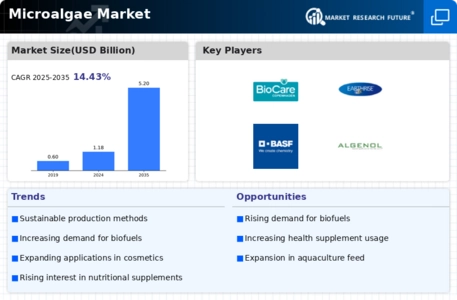
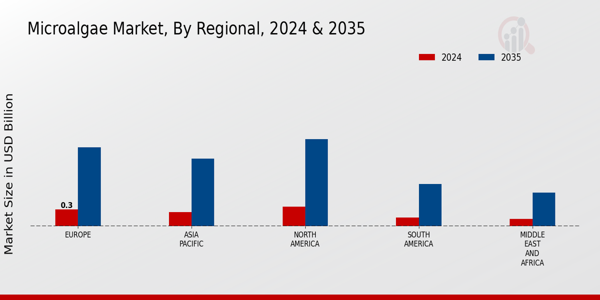
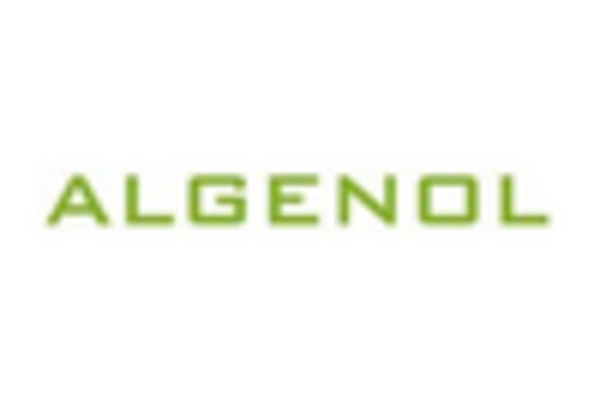
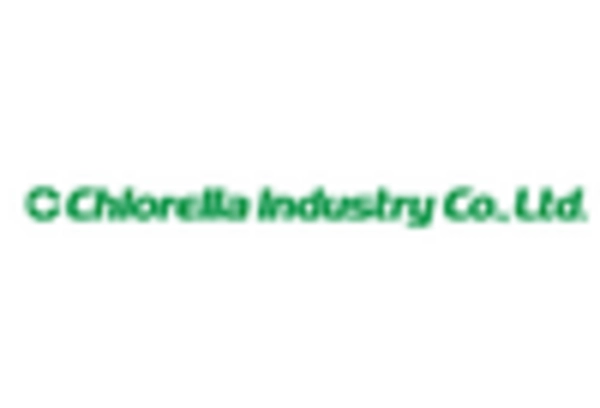
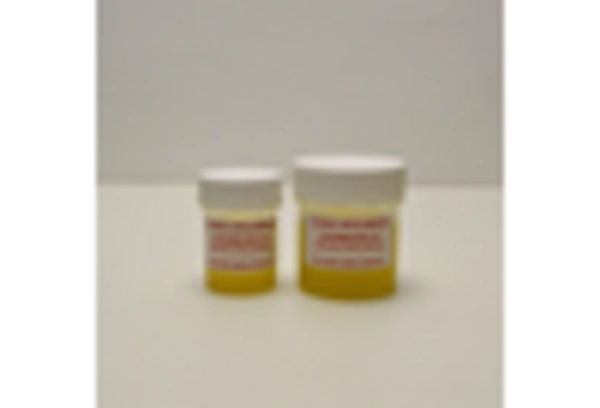
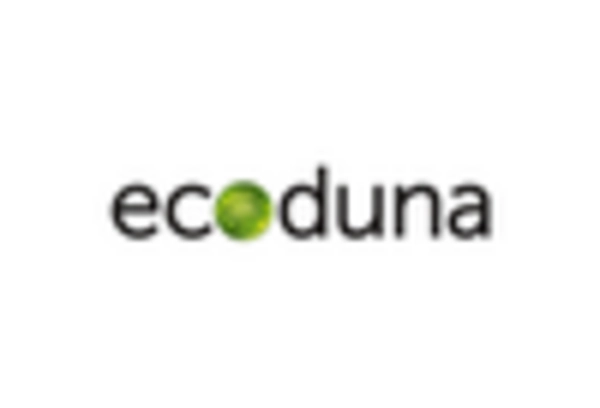
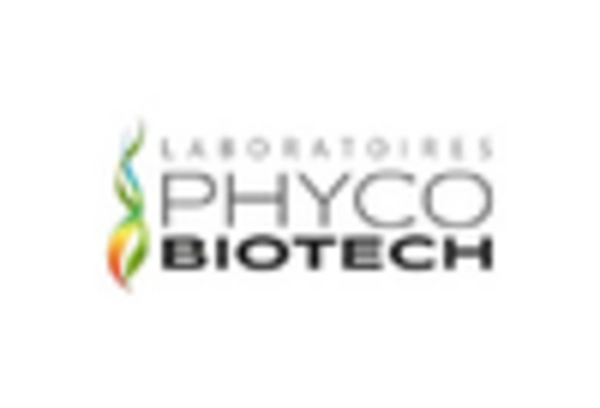
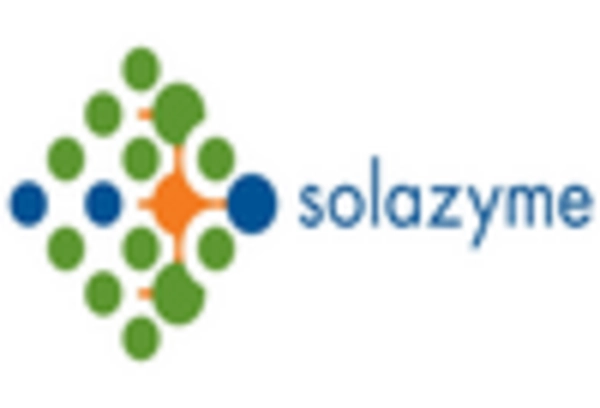

Leave a Comment